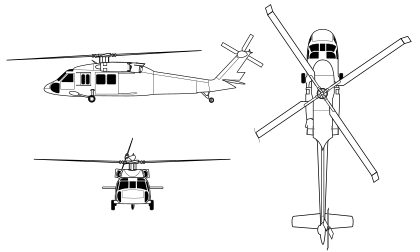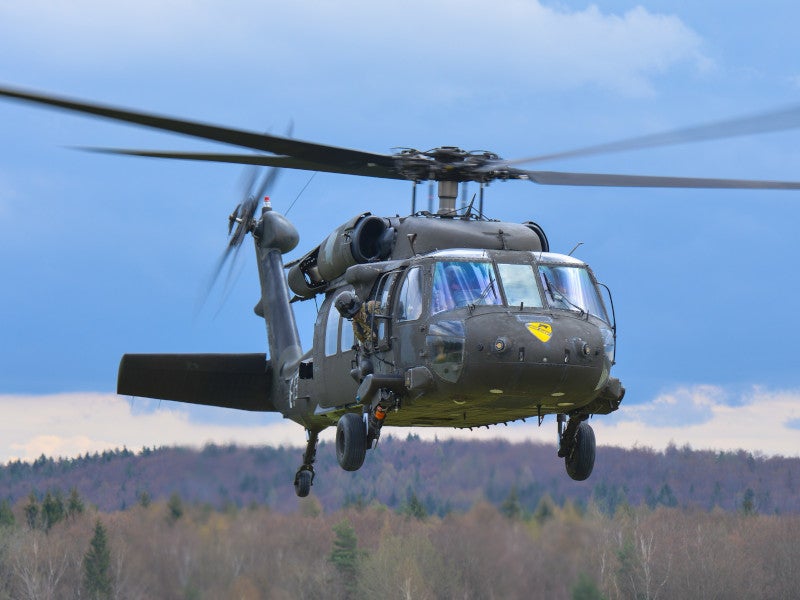UH 60 Black Hawk: Armed Forces Helicopter Functions and Abilities
UH 60 Black Hawk: Armed Forces Helicopter Functions and Abilities
Blog Article
The Effect of Sustainable Practices on the Future of Airplane Procedures and Emissions Decrease
As the aviation sector faces raising examination over its ecological influence, the adoption of lasting practices arises as an important path towards future aircraft procedures and exhausts reduction. Technologies in lasting aviation gas and advancements in hybrid propulsion technologies stand at the center of this improvement, appealing considerable decreases in greenhouse gas emissions. The successful combination of these efforts pivots on a variety of aspects, including governing frameworks and sector partnership. The inquiry stays: just how will these developing techniques improve the characteristics of flight and add to a more lasting future?

Introduction of Sustainable Practices
Lasting techniques in aircraft operations encompass a range of strategies targeted at minimizing ecological effect while preserving functional effectiveness. These methods are important in the aviation industry's commitment to decreasing its carbon impact and sticking to international ecological requirements. Trick campaigns include enhancing flight paths to decrease fuel usage, improving maintenance methods to ensure airplane run at peak performance, and carrying out sophisticated modern technologies such as winglets and lightweight materials that boost aerodynamics.

Engaging and training staff on sustainability techniques likewise play a vital duty, promoting a society of ecological responsibility within companies. On the whole, the combination of these sustainable methods not just helps in reducing emissions however additionally enhances the lasting feasibility of the air travel market, ensuring it satisfies the needs of both customers and governing bodies while adding to international sustainability objectives.
Ingenious Gas Alternatives
Various cutting-edge gas choices are becoming critical services to reduce the air travel market's dependence on standard nonrenewable fuel sources. Amongst these options, Lasting Air travel Fuels (SAFs) have acquired considerable interest because of their prospective to reduce lifecycle greenhouse gas discharges by as much as 80% contrasted to conventional jet fuels. SAFs are stemmed from different feedstocks, including waste oils, agricultural deposits, and also algae, making them a functional alternative for the sector.
One more appealing alternative is hydrogen gas, which, when used in gas cells, generates only water vapor as a byproduct. In addition, electric propulsion systems are being discovered, leveraging battery technology to power aircraft.
Finally, biofuels acquired from biomass are being checked out, offering a renewable option that can be mixed with traditional gas. Collectively, these cutting-edge gas options represent a crucial step towards achieving a lasting air travel ecological community, lining up with international discharges reduction targets and boosting the sector's ecological stewardship.
Technological Improvements in Aeronautics

How can technical developments improve the future of aeronautics? Innovations such as hybrid and electrical propulsion published here systems are at the leading edge, appealing considerable reductions in fuel intake and greenhouse gas discharges.
In addition, the application of sophisticated materials, such as light-weight composites, adds to enhanced aerodynamics and gas efficiency. Using artificial knowledge and machine discovering in trip operations enhances route preparation and reduces fuel shed by making it possible for real-time modifications based upon weather condition and traffic conditions. Additionally, the advancement of independent and remotely piloted aircraft systems stands to transform cargo and passenger transportation, potentially boosting effectiveness while decreasing human mistake.
In addition, lasting aeronautics modern technologies, consisting of sophisticated air traffic administration systems, can decrease and improve procedures congestion, resulting in reduced emissions throughout trip. These innovations collectively represent a standard shift in aviation, assuring a future where sustainability and functional efficiency are intertwined, thus supporting the industry's commitment to lowering its ecological impact.

Governing Framework and Compliance
In light of the expanding focus on environmental stewardship within the air travel market, the regulatory framework regulating airplane procedures is developing to promote lasting practices. Regulative bodies, such as the International Civil Air Travel Company (ICAO) and different nationwide air travel authorities, are introducing strict guidelines focused on minimizing emissions and improving functional effectiveness.
These laws frequently include the adoption of Sustainable Aviation Fuel (SAF), which has actually been identified as an essential component in achieving reduced carbon footprints. Additionally, compliance with these regulations calls for airline companies to carry out innovative innovations and operational practices, such as optimized flight paths and enhanced air traffic monitoring, to lessen fuel consumption.
Additionally, the enforcement of discharges trading plans and carbon countering campaigns is becoming progressively prevalent, engaging airlines to keep track of and report their exhausts properly. Non-compliance can lead to considerable penalties, thus pressing operators to prioritize sustainability in their you can find out more service versions.
Ultimately, the advancing regulatory landscape not only drives innovation and financial investment in environment-friendly technologies yet also fosters a culture of accountability within the aeronautics market. As these frameworks remain to develop, the concentrate on sustainable methods will be integral to achieving the sector's lasting environmental goals.
Future Trends in Aircraft Workflow
As the aviation sector adapts to a significantly stringent regulative atmosphere, future fads in aircraft procedures are readied to focus on ingenious services that further improve sustainability and efficiency - uh 60. Key developments will likely this hyperlink include the adoption of innovative air traffic management systems, which utilize real-time data and expert system to optimize flight paths, minimizing gas intake and exhausts
Another considerable trend is the enhanced integration of sustainable air travel gas (SAFs) These choices to conventional jet gas, originated from sustainable sources, can significantly decrease lifecycle greenhouse gas exhausts. The sector's commitment to SAFs will likely accelerate as airlines team up with fuel manufacturers to make certain schedule and cost-effectiveness.
In addition, the push towards electrification and crossbreed propulsion systems is gaining energy. Emerging aircraft styles will integrate these innovations, offering quieter and much more effective operations, especially for short-haul trips.
Final Thought
The adoption of lasting aviation fuels, coupled with innovations in hybrid and electric propulsion systems, is essential for lessening lifecycle greenhouse gas emissions. Enhancing trip paths and welcoming cutting-edge modern technologies contribute to a quieter and a lot more eco pleasant air travel field.
Advancements in lasting air travel gas and advancements in hybrid propulsion innovations stand at the center of this change, encouraging significant decreases in greenhouse gas exhausts.Countless cutting-edge fuel choices are emerging as essential solutions to decrease the air travel sector's reliance on standard fossil fuels - uh 60. Amongst these choices, Sustainable Air travel Fuels (SAFs) have actually acquired considerable focus due to their potential to decrease lifecycle greenhouse gas discharges by up to 80% contrasted to conventional jet fuels.One more substantial trend is the enhanced assimilation of lasting aeronautics gas (SAFs) The adoption of sustainable aeronautics gas, paired with innovations in electrical and hybrid propulsion systems, is important for lessening lifecycle greenhouse gas emissions
Report this page